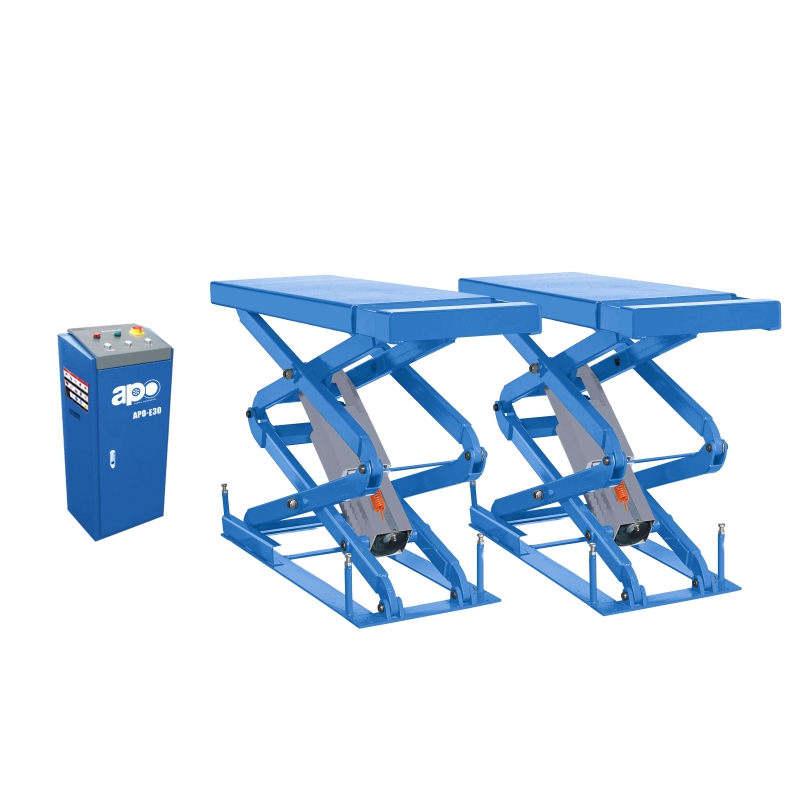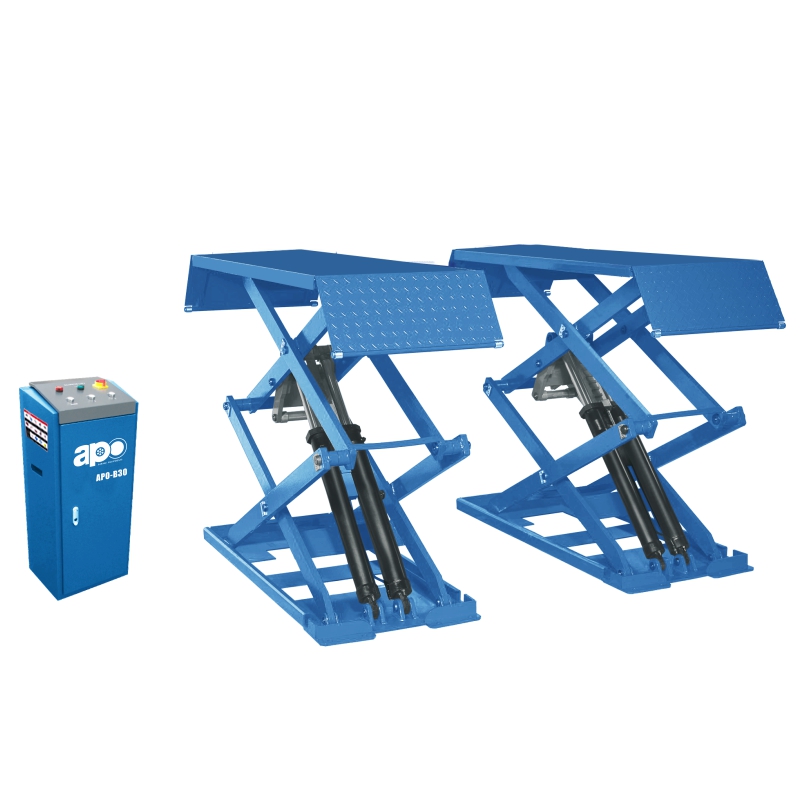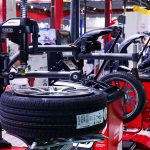Automotive lifts are fundamental pieces of equipment no repair shop regardless of size should do without. For that reason, whether you’re an amateur or looking to open up your own repair shop you’ll need to arm yourself with knowledge on vehicle lifts. The following are common FAQs customers have when browsing for vehicle lifts.
What is the difference between two post and four post lifts and which one should I get?
Well, this is really a two part question but the direct answer is it depends on how you are using the auto lift.
If you’re looking to have a vehicle stored up in the air and want to park another vehicle beneath, your best bet might be a four post lift. Four post lifts have two steel tracks running the length of the vehicle and lifts vehicles by the wheels. With these lifts you can do multiple things simultaneously such as oil changes, exhaust work and even working on tires and brakes. Four post lifts ensure that there is always easy-access to get in and out of the vehicle.
However, if you’re looking for a vehicle lift more for repairs we advise you to consider two post lifts instead. Two post lifts lift the vehicle at four points on the frame and this gives you access the complete underside of a vehicle including wheels. Two post lifts have their downside though and that is they aren’t recommended to use to store vehicles for a long time. If you store a vehicle beneath there is no way to make sure it is protected from fluids released by the vehicle from the top. Casters allow four post lifts to be moved easier than two post lifts because two post lifts have to be mounted to the ground.
Long story short, tell us what you’ll be looking to use it for and we’ll tell you which lift is right for you.
Lift Capacity, what do I need?!
The answer to this question is rather simple mainly because after you have the answer to the type of lift you need all you have to do is know what kinds of vehicles you’ll be servicing/lifting. If you’re using the lift in a commercial application and want to lift multiple makes and models, make sure you pick a lift with a capacity that is at least 25-30% higher than your heaviest vehicle. If you’ll be using the lift for storage then by now you should have an idea of the weight of the vehicles you’ll be lifting.
How high does the ceiling need to be?
If you’re looking to purchase a storage lift, all you have to do is simply measure the height of the two vehicles you will be parking and give yourself a little breathing room. If you purchase a two post lift you’re going to have to measure your ceiling.
Overhead Two Post vs. Floor Plate Two Post
Between these two options it is better to have the overhead because you’ll have no obstruction on the floor. However, if you do not have at least a 12 feet tall ceiling you might want to consider the floor plate model instead. Floor plate models are only 9 feet tall and will fit under most types of ceilings.
How thick does the concrete have to be?
Most two post and four post lifts will require at least a thickness of 4 inches at 3,000 PSI on a full slab.
How do I unload the Lift?
Lifts are very heavy and expensive pieces of equipment which is why unloading them needs to be done very carefully. Lifts can weight anywhere between 700-2,000 pounds so you’ll need a forklift, tractor or backhoe to unload it.
What else needs to be purchased besides the Lift?
Once you purchase the lift, be sure you purchase at least 3 gallons of hydraulic oil. With the power unit there is a pigtail included for the electricity but you’ll need to purchase a wall plug or wire the unit right to your power source. A two post lift will include floor mounting hardware, power unit and truck adapters while a four post lift is free standing and no mounting hardware is included but the power unit is.
How simple/difficult is the installation?
The technical part of the installation is simple but most lifts require at least 2 people to install and larger models might require even more people and quite possibly a forklift. Complete installation shouldn’t take more than 6 hours including technical hookup. Make sure you have a ladder, set of wrenches, and the aforementioned 3 gallons of hydraulic oil to complete the installation. If the lift will be mounted to the floor, you will need a drill to make holes for the anchors in the concrete. Tools not included.
Comments are closed.





Recent Comments